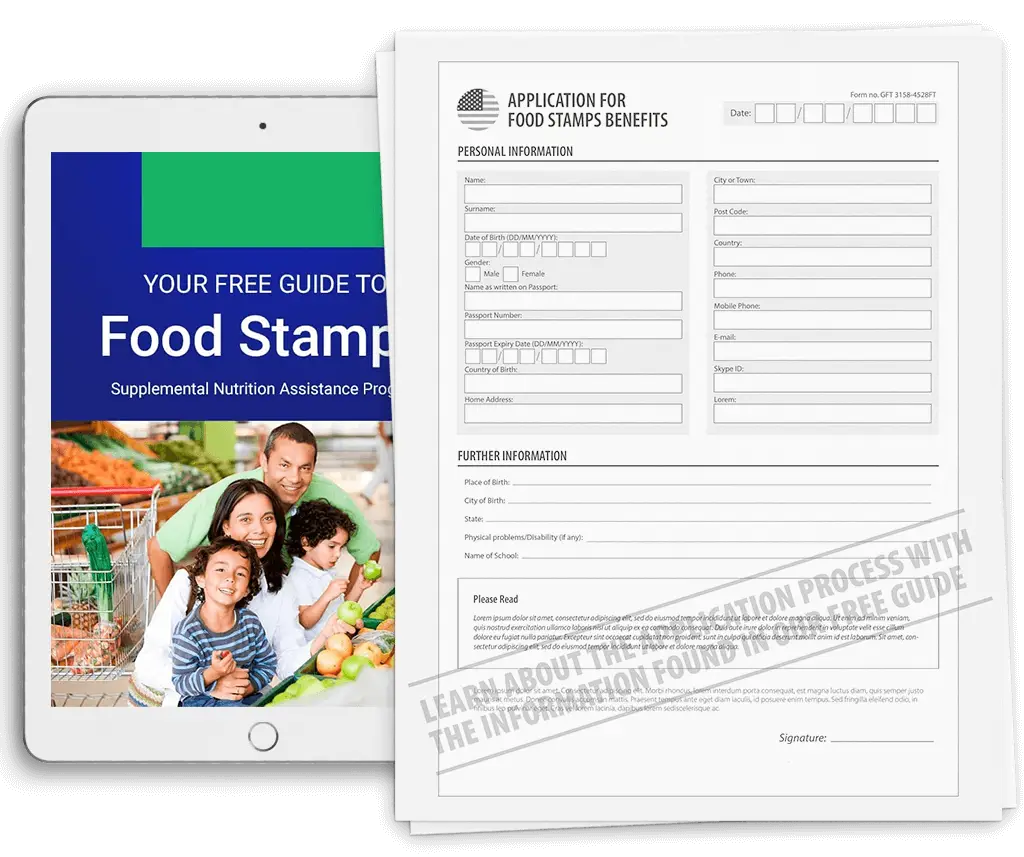Food stamps requirements in South Dakota are enforced by the Department of Social Services (DSS), which also distributes food assistance benefits through the Supplemental Nutrition Assistance Program (SNAP). Eligibility for food stamps in SD must be met by all applicants interested in gaining food assistance prior to applying for SNAP. Currently, the requirements for food stamps depend on income, citizenship, residency and ability to work. In addition, to qualify for food stamps benefits in South Dakota, applicants must be able to supply required documents to fulfill all of the requests of the DSS. Learn more about how to qualify for food stamps in South Dakota by browsing through the sections below.
Learn About South Dakota Income Requirements for SNAP Benefits
Requirements for food stamps in SD begin with reviewing the income of the household interested in applying for food assistance. To start, qualifying for SNAP means examining the current Federal Poverty Level (FPL) guidelines, which are broken down into gross monthly income and net monthly income by the number of household members. Currently, SD eligibility for food stamp assistance requires households to earn gross incomes at or below 130 percent of the FPL or net incomes at or below 100 percent of the FPL. Download our free guide to review more information on SNAP income limits.
In addition, income qualifications for food stamps in South Dakota factor in countable resources. The resources that are considered when calculating the income eligibility for food stamps include money in checking and savings accounts and stocks and bonds in the bank. However, when determining financial eligibility for food stamp benefits in SD, your home and one vehicle are not counted as resources.
If you do not qualify for food stamp assistance financially based on your income and countable resources, you can still factor in some deductions, which may help get you to the ideal FPL. Deductions that can be subtracted from your household income figure include dependent care costs, shelter expenses, child support payments that are made to non-household members and medical expenses for those family members residing in the household who are disabled or elderly. Once resources and deductions are accounted for, you will have a clear idea of whether your household will qualify for SNAP benefits financially in South Dakota.
Learn About South Dakota Citizenship Requirements for SNAP Benefits
To qualify for food stamps benefits in South Dakota, applicants must also be able to prove they legally reside in the U.S. SNAP qualifications for citizenship make it mandatory for citizens and noncitizens alike to provide acceptable documentation to support residing within the country. In order to be eligible for food stamp assistance in SD, citizens must provide official government-issued documentation, like birth certificates and passports, while noncitizens must supply immigration paperwork and supporting information to be enrolled into the food assistance program.
Additionally, South Dakota SNAP requirements enforced by the DSS state that applicants must provide their Social Security Numbers (SSNs). In addition to applicants, all other family members that will be considered for household benefits must supply their SSNs. Those who do not have SSNs must take the steps to file for them with the Social Security Administration to receive eligibility for SD SNAP benefits before filing applications with the DSS.
State residency is also part of the requirements for food stamp assistance in South Dakota. Since food stamps are distributed on a state level, any applicant who wishes to receive SNAP benefits in SD must prove he or she resides within state borders. Documents that prove South Dakota residency include driver’s licenses and state ID cards, along with select mailed documents (like utility bills and rent/mortgage statements) that display current mailing address information.
Other SNAP Requirements You Must Meet in South Dakota
South Dakota food stamps requirements also make it mandatory for those fit enough to meet work obligations to do so. Currently, work-based eligibility for SD SNAP applies to Able-Bodied Adults Without Dependents (ABAWD). The DSS oversees the South Dakota work requirements for SNAP, which ask all beneficiaries to work at least 20 hours per week (or 80 hours per month) to maintain benefits. Those looking to qualify for food stamps in the counties of Minnehana and Pennington must register for work at 16 years of age (and requirements apply up until 59), whereas the age limit in other counties is 18 through 49. There are some exemptions in place that apply to beneficiaries who are elderly or disabled, as they may not be fit to work as required by the DSS.
Applicants Who Are Not Qualified for South Dakota SNAP Benefits
If you are still wondering how to qualify for food stamps in SD, you must consider the groups that are ineligible to receive benefits, even if they meet all of the above requirements. Students who are enrolled in classes more than halftime may not qualify for SNAP assistance, nor will strikers who did not meet eligibility requirements the day prior to striking. In addition, those accused of collecting duplicate benefits will be rejected from SNAP in SD, as will those convicted of trafficking charges. In addition, felons are not eligible for food stamp benefits in South Dakota, nor are probation and parole violators. To learn more about how to qualify for SNAP, download our guide.
